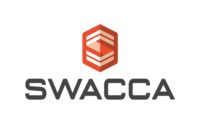INTERIOR EPS SHAPES NEED THERMAL BARRIER
Editor:I read your recent article, “Shapely EPS,” in your December issue. Decorative shapes are not exempt from building code requirements. The IBC (International Building Code) dedicates an entire chapter to Foam Plastics (Chapter 26) and the IRC (International Residential Code) references Foam Plastics in Section R 314.vxv. In order to differentiate between the two codes, it is important to realize that decorative foam shapes used in non-combustible construction must satisfy Chapter 26 of the IBC. The requirements include, but are not limited to, testing the system in its end use configuration. Dryvit has tested our systems with decorative foam shapes that have been prepared with Dryvit products (base coat, mesh and finish) to satisfy code requirements. If one substitutes decorative foam shapes that are not prepared with the EIFS manufacturer’s products when installing EIFS on a wall, the requirements of Chapter 26 would have to be satisfied in order to comply with the code.
While I presume the EPS shapes that were installed in the bedrooms of Mr. Belchers’ daughters were added by the homeowner and not the builder, it is important to understand that the use of foam plastic on the interior of a structure is limited per Section R 314 of the IRC and Section 2603.4 of the IBC. Foam plastic must be separated from the interior of a building by an approved 15-minute thermal barrier, usually achieved with gypsum wallboard. However, if these shapes utilize polyurethane coatings as implied, I suggest Mr. Belcher obtain verification from the coating supplier that these shapes meet the 15-minute thermal barrier requirement if he intends to keep them in his daughters’ rooms.
Bill Preston
Senior Engineer/Code Specialist
Dryvit Systems Inc.
EIMA Technical Chair


Report Abusive Comment